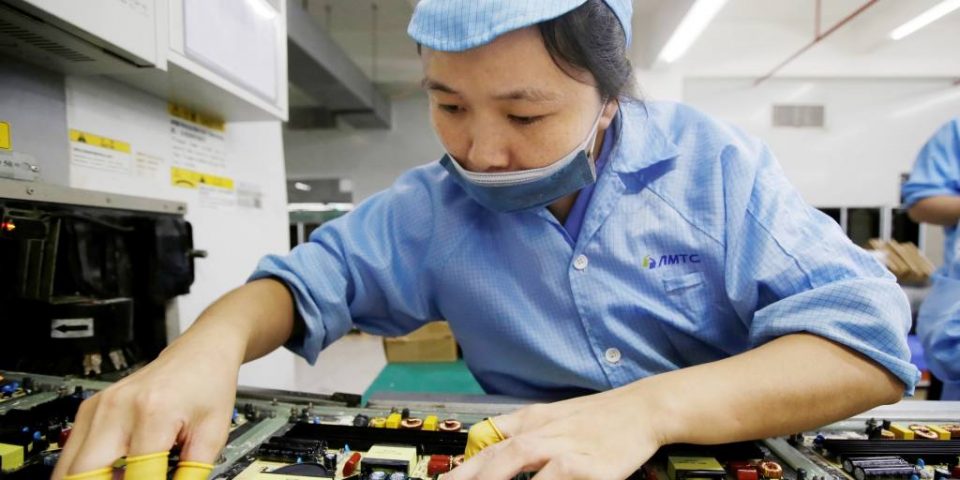GUANGZHOU — Amid uncertainty about where the U.S.-China trade war is headed, Chinese manufacturers are hesitating in their attempts to shift production overseas.
While there is some eagerness to go ahead with these moves, many manufacturers are wary about the lack of technological sophistication and funding in target destinations.
The eagerness stems from U.S. sanctions — and from Washington’s plan to impose additional tariffs on smartphones, toys and other items on Dec. 15.
A representative of a cashmere clothing maker in the Xinjiang autonomous region said the company is bracing for the impact that the new tariffs will have.
The company has moved up the delivery of orders to its U.S. customers so as to escape the additional tariffs, at least for the time being.
The company, which ships its clothing around the world, receives 20% of its sales from the U.S.
If the additional tariffs are introduced as scheduled, they would significantly impact the company’s operations.
The cashmere producer has considered relocating production to Cambodia, where one of its executives recently toured an industrial park. The executive came back disappointed with the old technology used by button makers and other Cambodian companies.
Management has since given up on the relocation plan, fearing the company could face higher costs in Cambodia than in Xinjiang despite the sanctions.
When Washington raised tariffs in May, a jeans maker in Guangzhou lost most of the orders it had been receiving from the U.S., which had been its main market.
Its rivals proved more nimble and relocated production to Vietnam and Pakistan so their products could avoid the tariffs. As a result, they have continued receiving orders from the U.S.
The Guangzhou company also considered overseas production, but its small size prevented it from following through on the idea. Instead, the jeans maker has been focusing on finding non-U.S. customers.
With many micro, small and medium-size jeans makers, the industry was squeezing itself for profits before the U.S. began using tariffs as a bargaining tool in trade negotiations. The new levies have dealt a serious blow to an industry that has relied on the U.S. as a main customer.
An executive in charge of sales at the Guangzhou jeans maker could only say, “I believe that the U.S.-China trade war will be resolved early.”
Meanwhile, smartphone makers and electronics manufacturing services with production bases in China are finding it difficult to move out of the country.
Because Washington has said it will impose additional import sanctions later this month, management at one Chinese manufacturer has decided to pay a deposit to secure an overseas production site but hold off on actually transferring production. One executive said the company is ready to “move quickly depending on the U.S.-China talks.”
Other companies are taking similar approaches. Japan’s Panasonic, which deals with Chinese manufacturers, is “closely watching customer trends,” said Toshihide Tanaka, a senior executive.
Panasonic recently established a system that allows sales executives at its China operations to more freely exchange information with teams in Vietnam and India. The idea is to be able to smoothly supply products to customers should Panasonic have to relocate its China production.
Game consoles, clothing and other items are to be hit by the scheduled tariffs, causing uncertainty in China’s EMS and other export-reliant industries.
Where to produce is merely one concern. Chinese manufacturers also worry that the U.S.-China rift and other frictions could dampen global trade.
They have reason to fret. The latest merchandise trade index, released by the World Trade Organization in November, remained below the boom-or-bust threshold of 100 for a fifth quarter in a row.
And at the latest China Import and Export Fair, held In October and November in Guangzhou, the value of contracts concluded by Chinese manufacturers and overseas buyers declined 1.9% from a year earlier to about $29.2 billion.
It was the semiannual trade fair’s third consecutive year-on-year decline.


